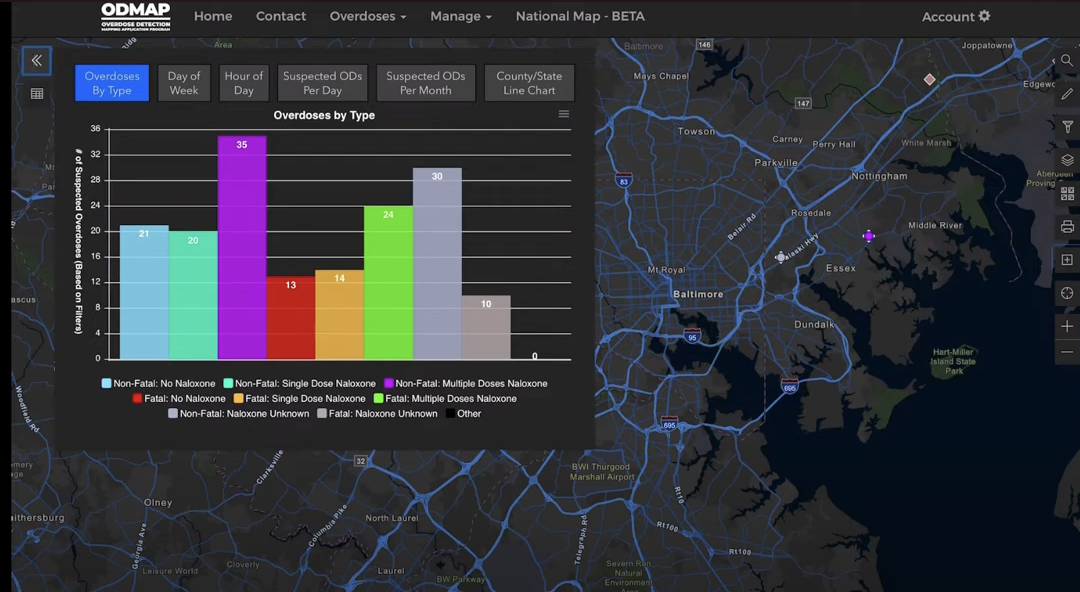
- Details
- By Elyse Wild
As the nation contends with the fourth wave of the opioid crisis, shortcomings in data collection continue to paint an incomplete picture of overdoses in Indian Country. But, a new bill introduced last month would fund tribes, state and local governments, and law enforcement task forces to collect near real-time data on overdoses, potentially filling the gaps to direct help where it is needed most — and saving lives.
The opioid crisis had its beginnings in the late 90s with the unregulated overprescription of opioids and is now characterized by the omnipresence of fentanyl — a highly potent synthetic opioid 100 times stronger than morphine — in the drug supply. Along with being combined with other opioids, Fentanyl is found increasingly in non-opioid drugs, such as methamphetamine, cocaine, and ecstasy. It contributes to 70% of overdose deaths, according to the CDC.
The Opioid Overdose Data Collection Enhancement Act, drafted by Sen. Maria Cantwell (D-Wash.), will help communities adopt and implement the Overdose Detection Mapping Application Program (ODMAP). Launched in 2017 by the Washington/Baltimore High-Intensity Drug Trafficking Area –— a program of the Office of National Drug Control Policy — ODMAP is currently being used by 4,800 agencies across the country. More than two million overdoses have been logged into its database. The system could bridge the divide between jurisdictions and disparate data systems that hinder accurate data keeping in Indian Country.
ODMAP lets users enter overdoses into its cross-jurisdictional system, allowing for coordinated, quicker responses to sudden spikes in overdoses. Data points include whether the overdose was fatal or non-fatal, which drugs were involved or suspected to be, and whether the overdose reversal drug naloxone was administered. Users can create "spike alerts," notifying all users of increased overdoses in designated area and track the availability of naloxone in different While overdoses fell in the overall population in 2023 for the first time in five years, the rates of overdoses among Native Americans increased by 2% and were the highest across all demographics.
Experts and advocates say there are many factors behind the overdose rates in Native communities, including geographic isolation, lack of access to healthcare, insufficient and unfunded law enforcement, and the effects of generational trauma.
Samantha McGee is a project coordinator at Choctaw Nation Health Services Authority who oversees the distribution of naloxone to the tribe's first responders. She told Native News Online that ODMAP would be extremely beneficial to tracking non-fatal overdoses in the community and ensuring that the areas where overdoses are spiking are well-equipped for more potential overdoses.
"If we are able to see overdoses, even if they are not deadly, that doesn't make it less important," she said. "It could help our first responders be aware and prepared."
McGee said access to the near-real-time data could help get naloxone into the hands of community members who are in areas where overdoses are spiking,
"We have community Facebook groups where we could post, 'Hey, we've had multiple overdoses in the area recently, you can come to city hall and get naloxone.' Something like this would be so important."
More Stories Like This
Cherokee Nation Proposes $30 Million OU Nursing School Partnership to Expand Health WorkforceHealth Stories We’ll Be Following in 2026
Indian Country Faces Crippling Premiums Under Expired Affordable Care Act Credits
Artificial Intelligence Impacts the Art and Science of Dentistry – AI Part 2
Feds Announce $50 Billion to States for Rural Health, Tribes Barely Mentioned in Awards

